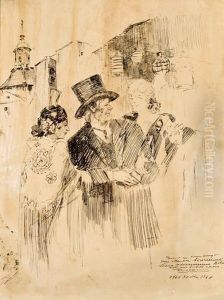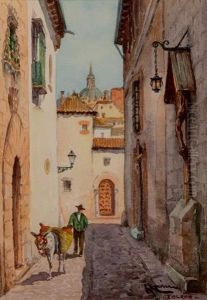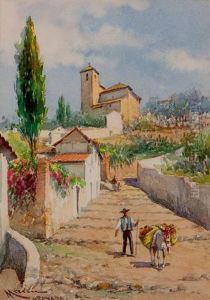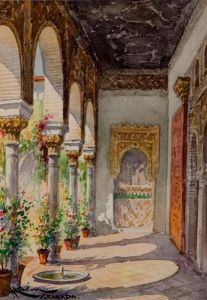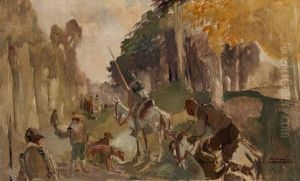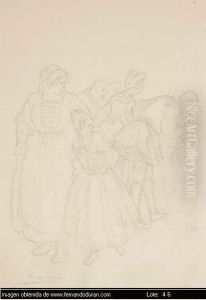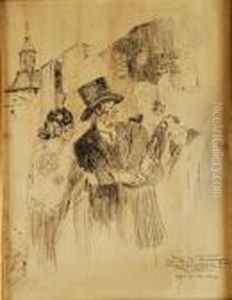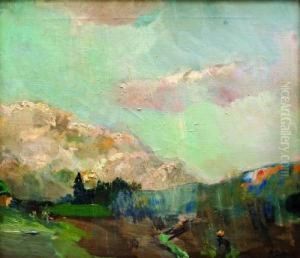Ricardo Marin Y Llovet Paintings
Ricardo Marín y Llovet was a prominent Spanish artist, known for his exceptional skills as an etcher, illustrator, and painter. Born in Barcelona in 1859, Marín y Llovet was deeply embedded in the rich cultural and artistic environment of Spain during a period that witnessed a revival and transformation in Spanish arts, particularly at the turn of the 20th century. His work is often associated with the broader movements of realism and impressionism, although he maintained a distinctive style that was applauded for its originality and depth of expression.
Marín y Llovet's education and artistic training were rigorous and comprehensive. He studied at the Escola de la Llotja in Barcelona, a prestigious institution that has nurtured many significant artists in Spain. His talent was recognized early on, and he received several awards and scholarships that allowed him to travel and study in other parts of Europe, including Italy and France. These experiences enriched his artistic vocabulary and exposed him to a wide range of influences.
Throughout his career, Marín y Llovet contributed significantly to various aspects of Spanish art. He was not only a prolific painter but also excelled in the art of etching, a medium through which he achieved notable recognition. His etchings often depicted scenes of everyday life, landscapes, and historical subjects, characterized by a remarkable attention to detail and a masterful use of light and shadow.
In addition to his work as an artist, Marín y Llovet played an instrumental role in the artistic community of Barcelona. He was involved in several artistic associations and frequently participated in exhibitions, both in Spain and internationally. His works were well received by critics and collectors alike, and he was awarded numerous prizes throughout his career.
Ricardo Marín y Llovet's legacy is preserved in various museums and private collections, where his works continue to be celebrated for their technical mastery and emotional depth. He passed away in 1933, leaving behind a rich body of work that continues to inspire and captivate audiences. His contribution to Spanish art is considered invaluable, bridging the gap between traditional and modernist tendencies and enriching the cultural heritage of Spain.


